We caught up with the brilliant and insightful Thomas Spake a few weeks ago and have shared our conversation below.
Hi Thomas, thanks for joining us today. Earning a full time living from one’s creative career can be incredibly difficult. Have you been able to do so and if so, can you share some of the key parts of your journey and any important advice or lessons that might help creatives who haven’t been able to yet?
As I reflect back to the beginning of my pursuits as a glass artist, I can’t think of a time when I didn’t think I could make it as an artist. I knew that I might have to struggle, scrape and crawl to achieve my goals. That was certainly true. In the beginning I worked for other glassblowers, absorbing what knowledge I could about the different glassmaking techniques and processes, gaining experience on maintaining and building glass making equipment, and trying to get a grasp on the business side of running a creative calling. After working long hours during the week, I would rent other glass studios to make my own glasswork, trying to develop my own style. During this time, I was collecting materials, equipment, tools, and to put together my own glass studio, as as doing local farmer’s markets to see how my work would be received from the public.
So, in 2002, I began building my own glass studio on an old horse farm outside of Chattanooga, TN. I have been. earning full-time living since that point. It has been a tough road, especially in the beginning, but now is flourishing and growing. I feel like the whole process has moved along at a steady pace, allowing me to learn and grow along the way.
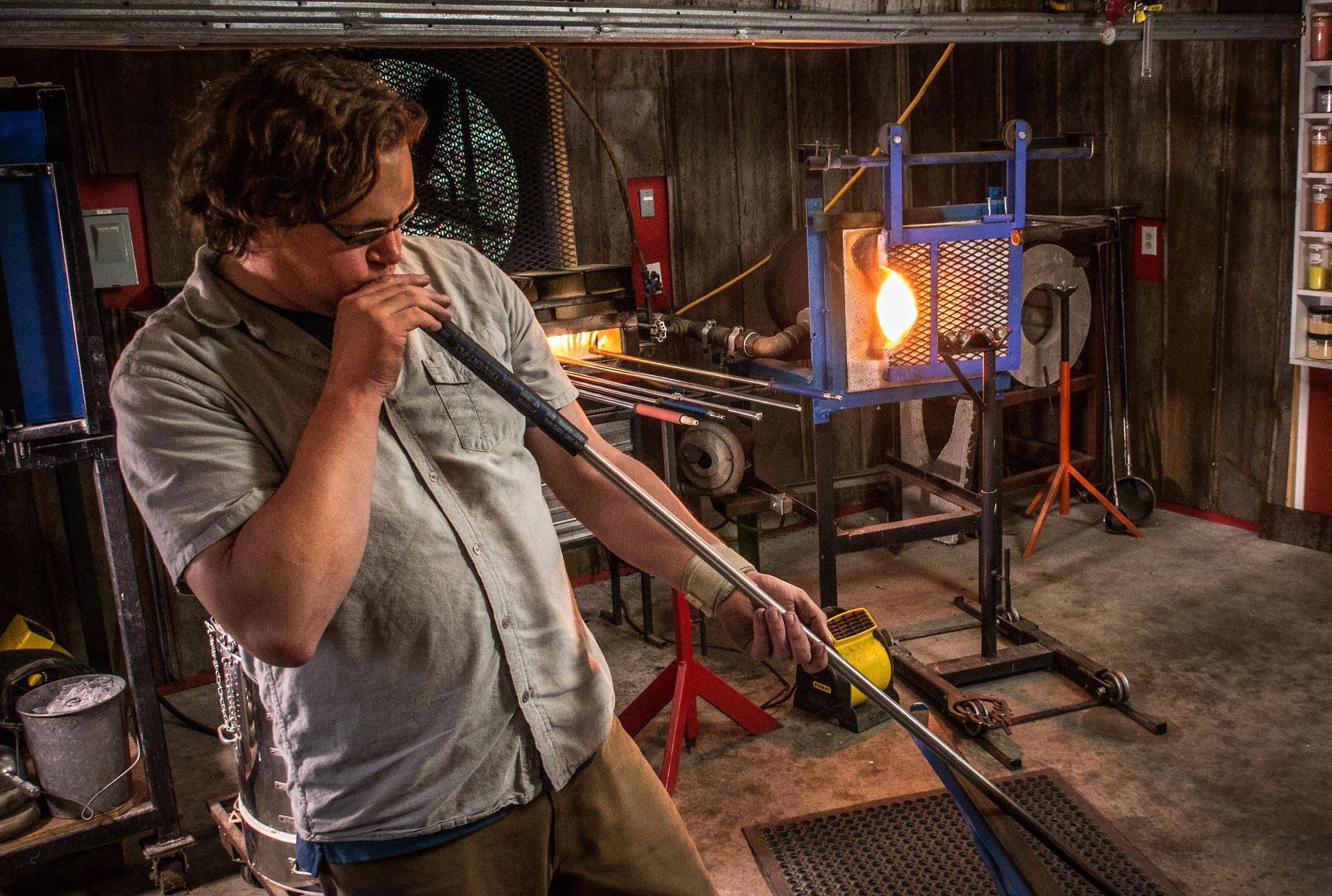


Thomas, love having you share your insights with us. Before we ask you more questions, maybe you can take a moment to introduce yourself to our readers who might have missed our earlier conversations?
I began blowing glass back in 1994. As it happened, I went to Centre College to pursue a basketball scholarship, but as fate would have it, a work study in the art department introduced me to glassblowing. I remember that jaw dropping moment, seeing the molten material rotating on the blow pipe, the creative energy, the improvisation, the dance, the sweat, the teamwork. All these things at once. This was something I had to do. After 2 years, I walked off the court, and into the hotshop to take my first class. The rest, well is art history.
The college glass experience was one of exploration, trial and error, and a “see what happens” approach. This is how art is created, through a willingness to explore the material and make mistakes. When I graduated, I received a fellowship at a renowned Craft School, the Appalachian Center for Craft. This experience focused my attention into the fine details of glass blowing, crafting the perfect object, great technique, and the understanding of the process.
As my tenure ran out, I was approached by a gallery that wanted to open a glass blowing studio, in the Arts District of Chattanooga. This entire process, from building the equipment, laying out the space, designing the glassware, teaching workshops, demonstrating to the public, proved to be an invaluable experience, and led me to my current adventure.
In 2002, I began my own business, Thomas Spake Studios. While glass is my primary material of choice, I also create large site specific sculpture, fabricate custom gates, railings and fences, design jewelry, teach glassblowing workshops, and make awards and gifts for various businesses and organizations.
My glasswork is a collaboration of sorts. I am an explorer, searching for new textures, colors and forms that exist in nature. I then photograph these various places, objects, and moments and try and capture the sensibilities from these photographs in my glasswork. While my designs are inspired y the natural world, my color techniques, are influenced by the work of 19th century impressionist artists Klimt, Monet, and Van Gogh and their mixture of colors and patterns to express the idea of trees, water, and sky. One thing that makes my work unique is that I’m using different colored glass chips and powders to create the textures and patterns. Much like painting multiple layers to create patterns and textures as the impressionists did, I create textures in glass with the colors from underneath coming through and combine them with the colors on top for the finished product. So the technique is utilized not only for the final result, but also for the process of creating, similar to how the impressionists combined colors on and below the surface.
Thomas Spake Studios creates unique glass art, incorporating age old glassblowing techniques with good ole American ingenuity to create decorative and sculptural glass art with a style all its own.
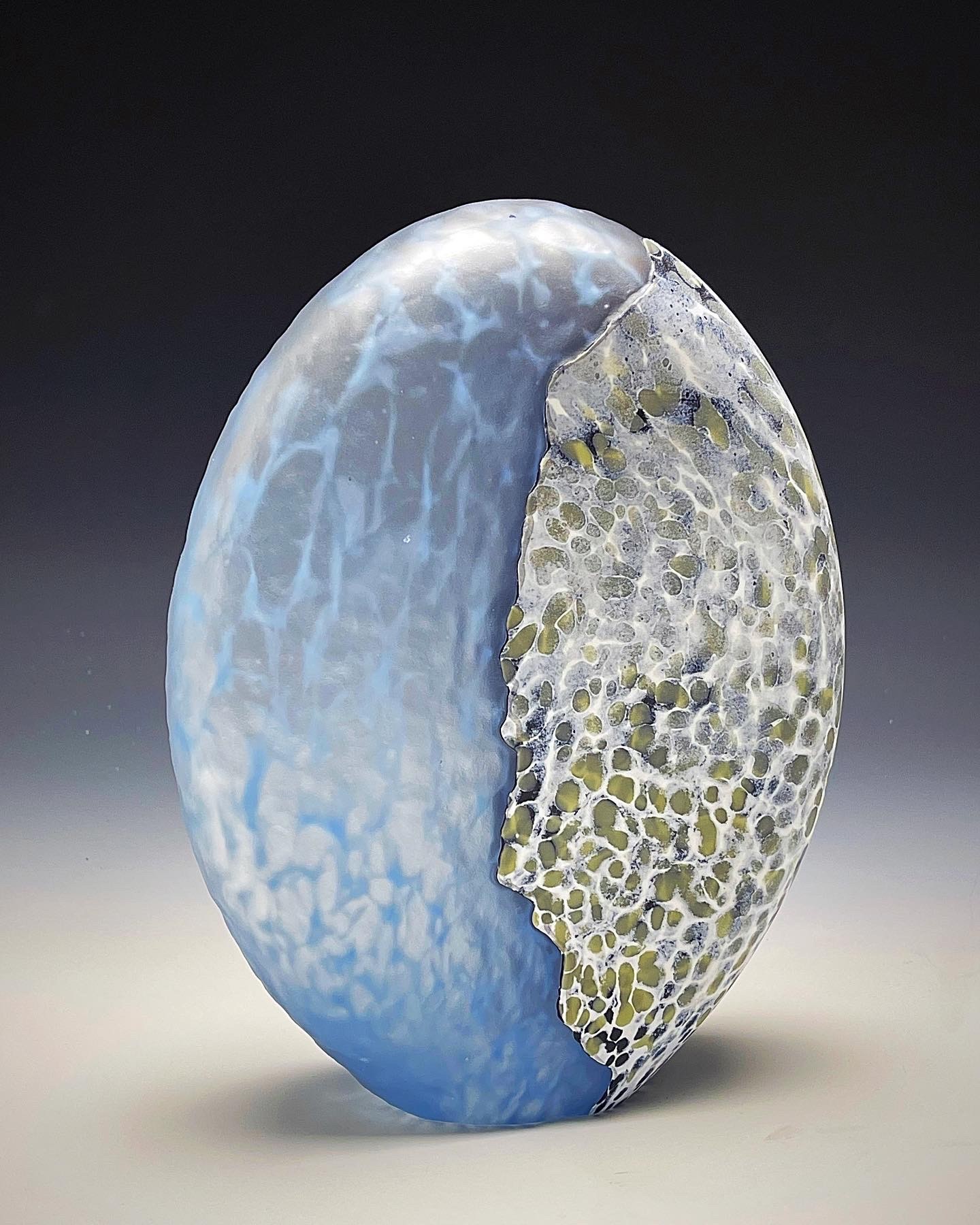

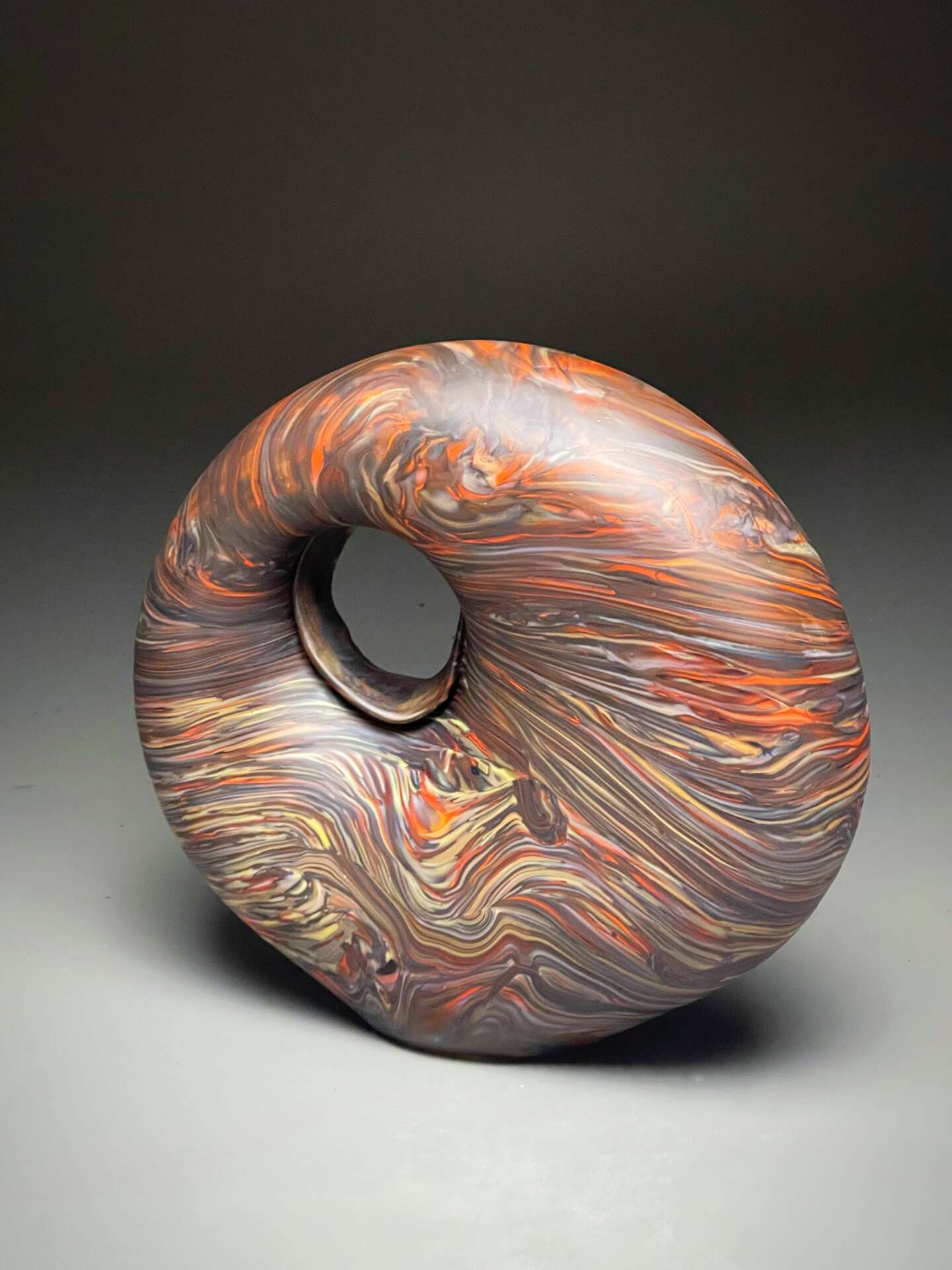
For you, what’s the most rewarding aspect of being a creative?
For me, The most rewarding aspect of being a creative is the freedom to create what I want. As the sole glass designer for my glass business, I have the choose to make something functional, decorative or abstract. Of course, the market will determine if that design is viable or not. I have the freedom to present the style that I want, to go more mainstream and create designs that are transparent and clean or the create my own unique style where texture, patterns and wabi sabi are emphasized and celebrated. Another rewarding part of my creative business is the freedom to come and go as I please; to take my daughter to school, attend her school events, and to travel on a whim. There is always a give and take, but the decision is mine.
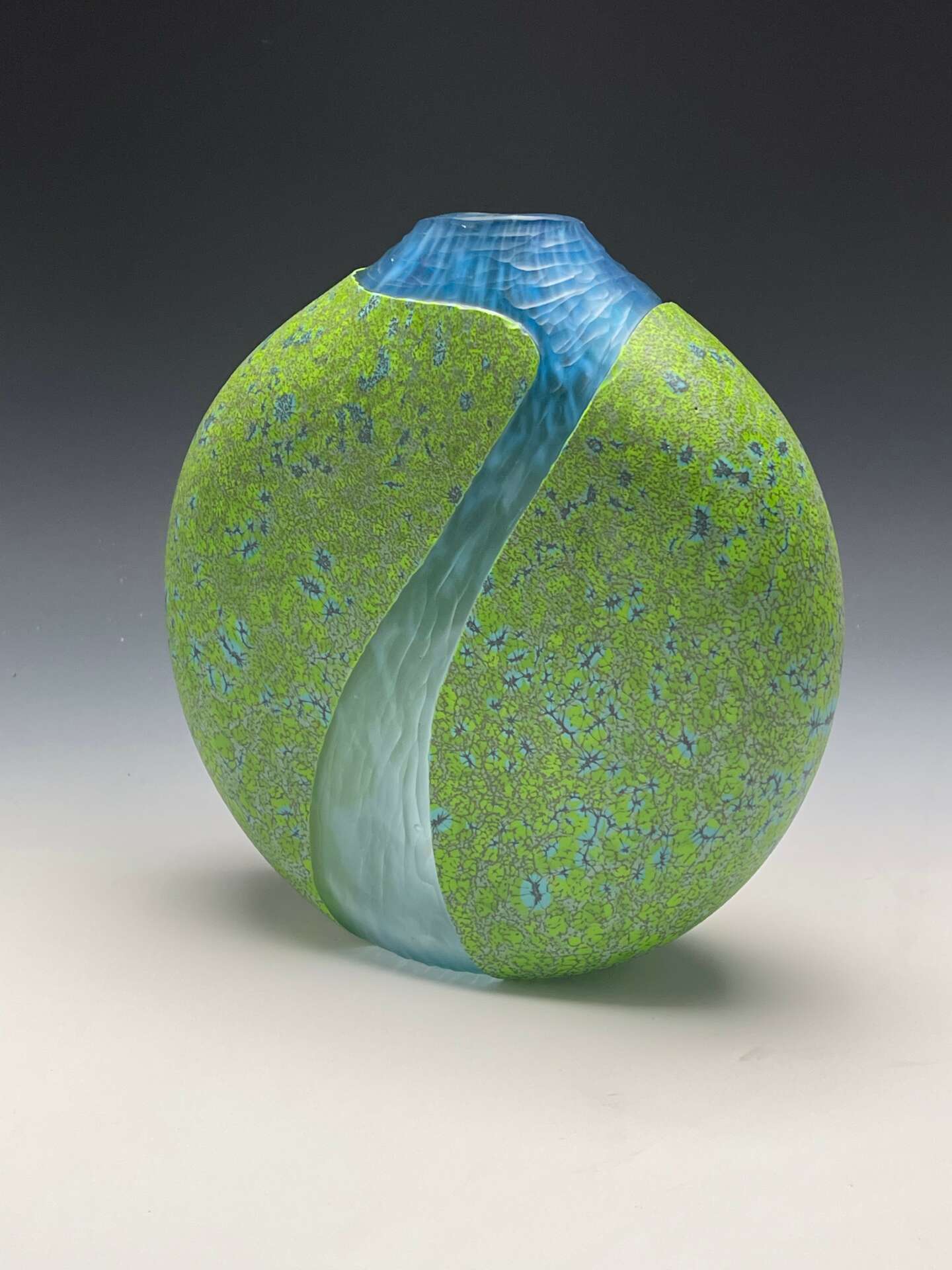
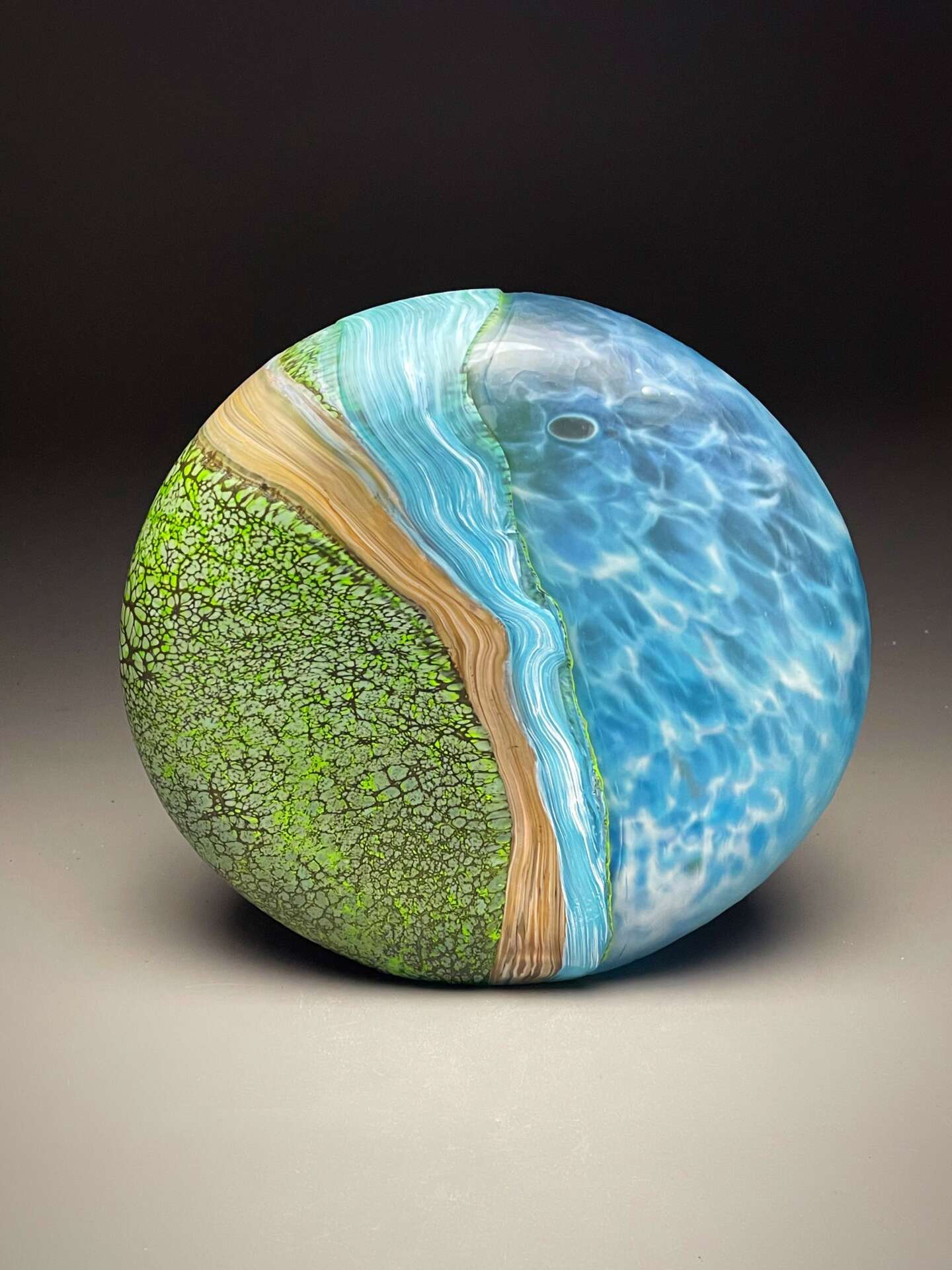
Is there something you think non-creatives will struggle to understand about your journey as a creative?
This answer ties into the last question. There is a freedom to running your own creative business, but if you don’t have the discipline to take your job seriously, finding success will be an uphill struggle. The creative business owner wears all the hats, bears all the responsibility, as well as makes all the product, especially in the beginning. That’s a big balancing act. Hopefully, with some success, you can hire others to assist you with some of the chores and responsibilities. The fact of the matter is that working 60 hours a week is the minimum and plan on spending at least 10,000 hours on your creative endeavor before you become proficient. .
Contact Info:
- Website: https://www.thomasspakestudios.com
- Instagram: https://www.instagram.com/thomasspake
Image Credits
Luke Padget – the action shots Thomas Spake – product shots


